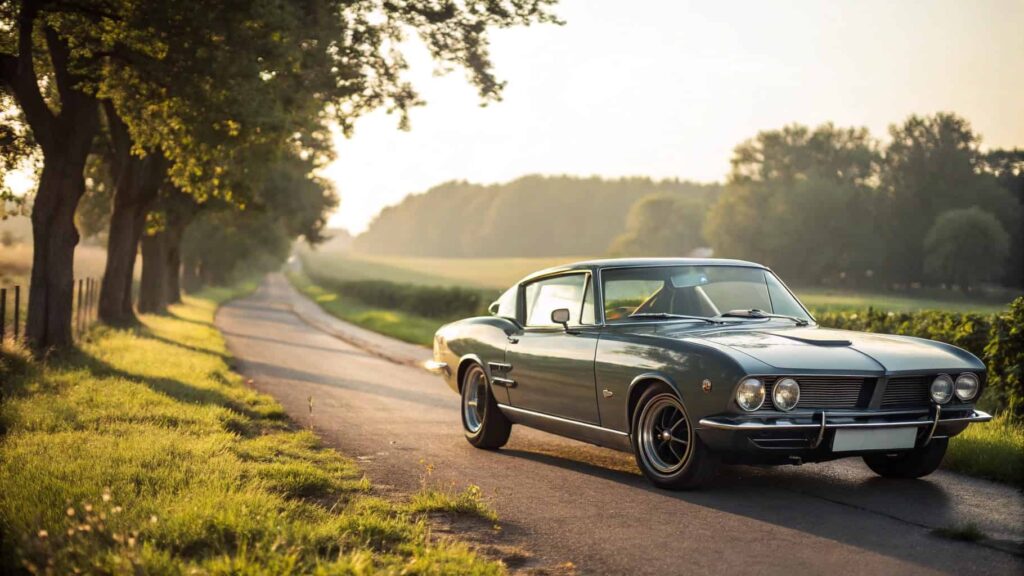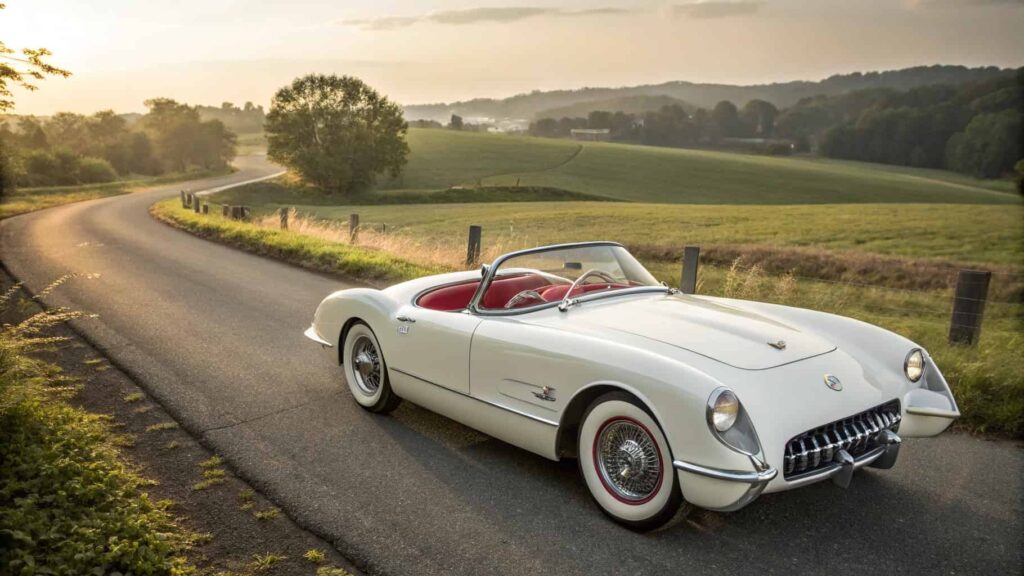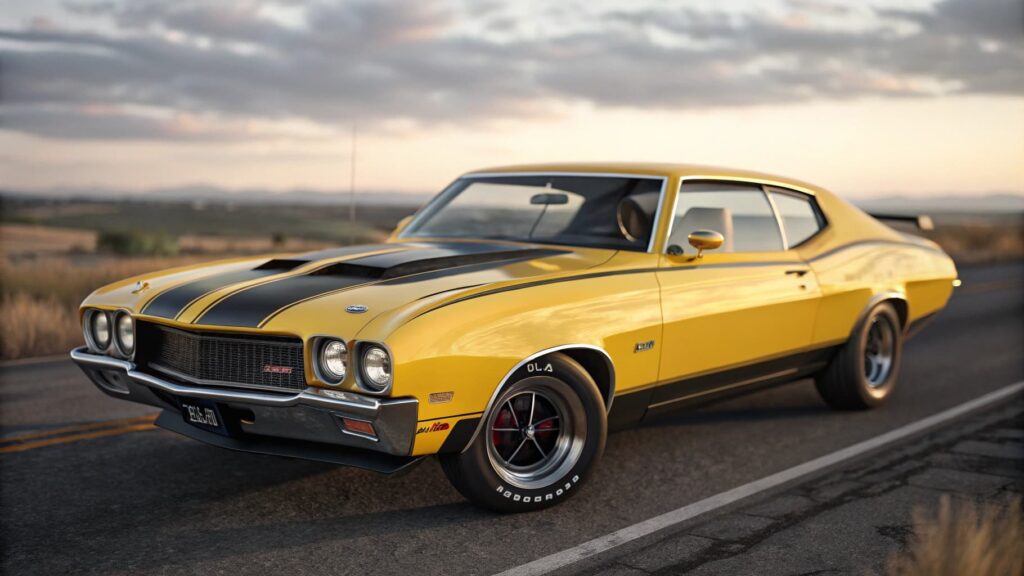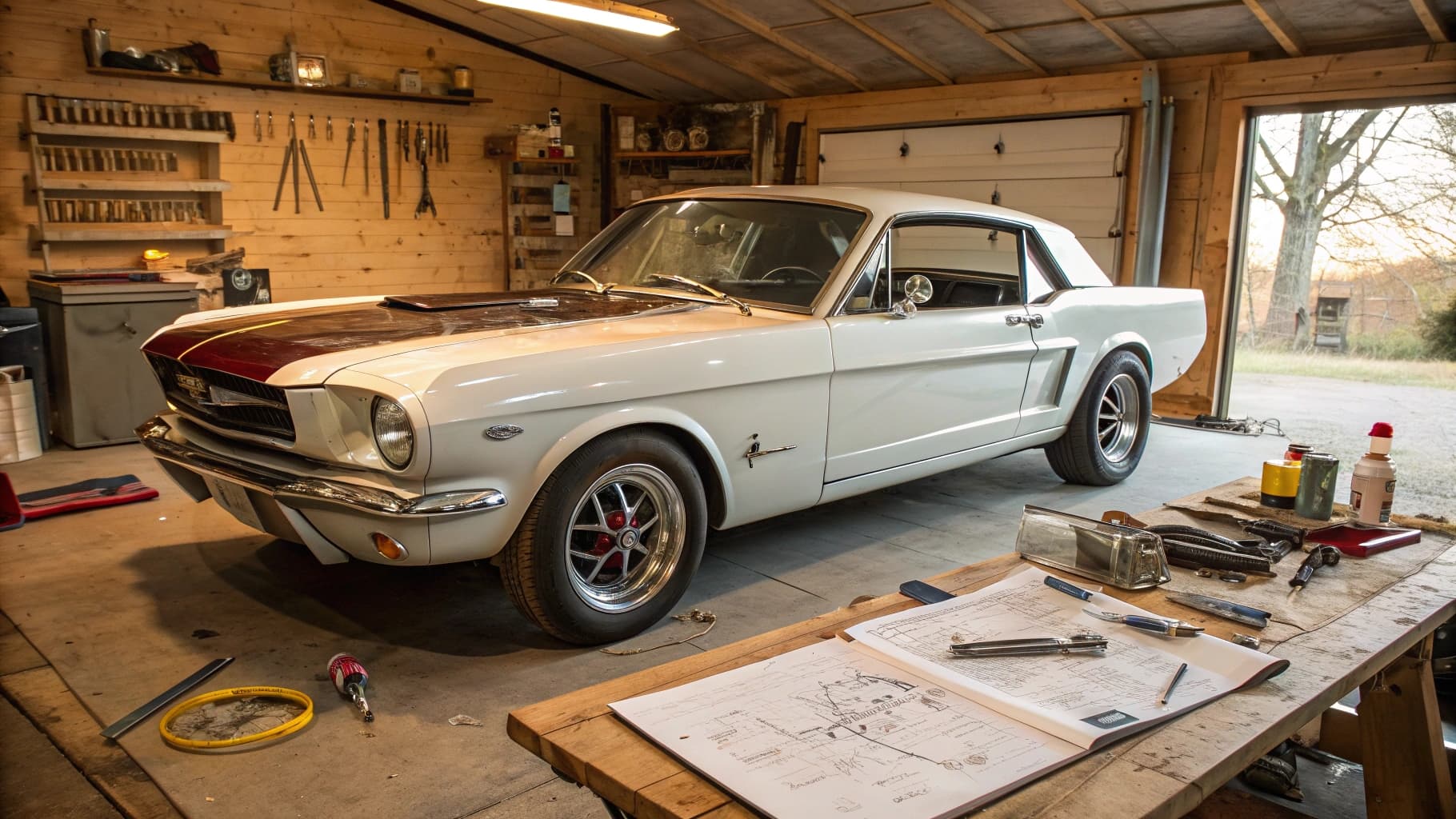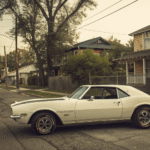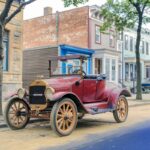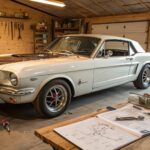Now Reading: 1967 Chevrolet Camaro – Performance, Design, and Legacy
-
01
1967 Chevrolet Camaro – Performance, Design, and Legacy
1967 Chevrolet Camaro – Performance, Design, and Legacy
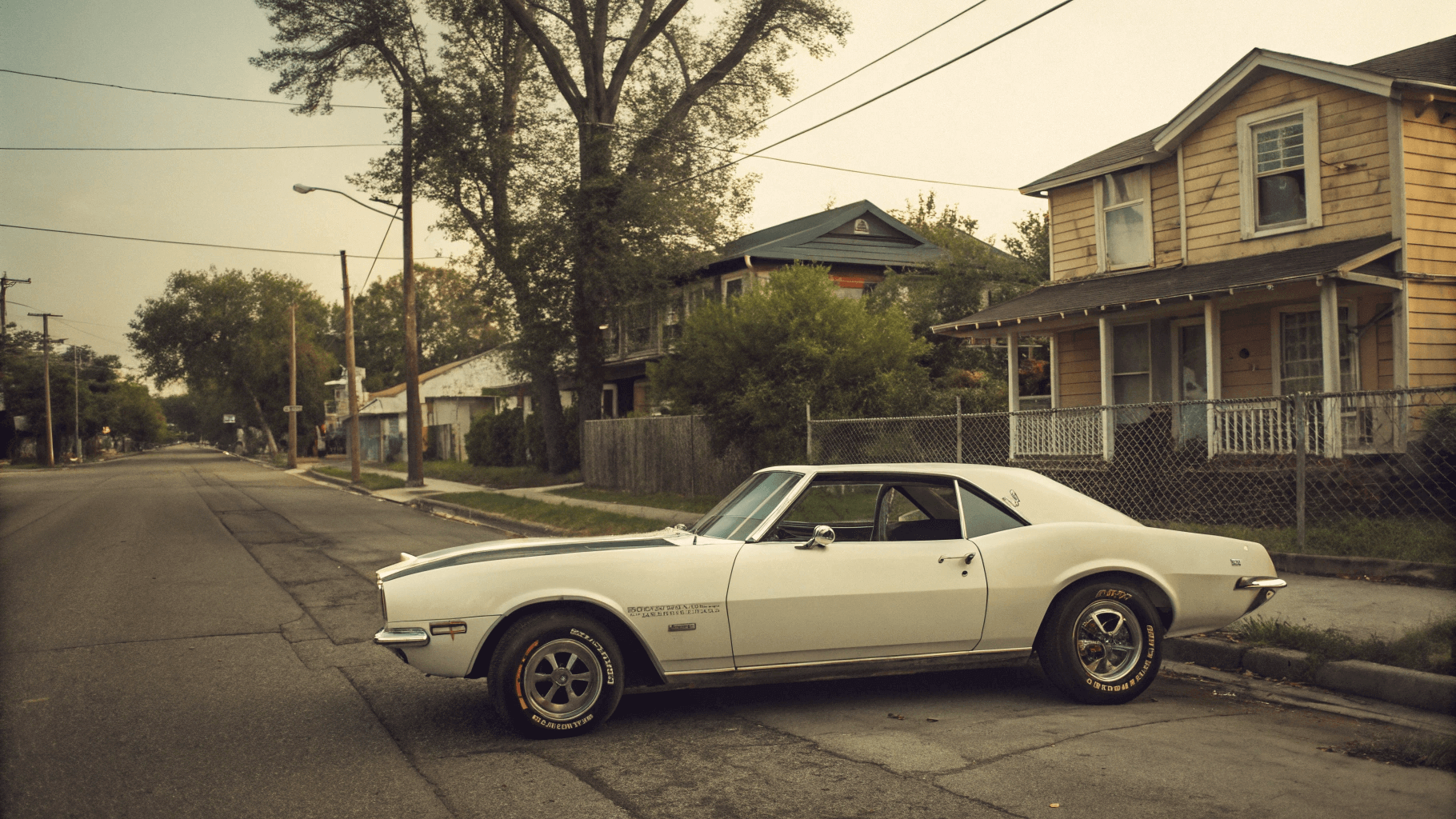
Back in the mid-60s, the car world was buzzing. Ford had just dropped the Mustang, and it was a hit. Everyone loved its sporty look and price tag. Chevy, not wanting to be left in the dust, decided it needed its own contender. Enter the Camaro. The name “Camaro” was picked because it sounded cool and meant “companion” in French. Chevy’s new ride was built on the F-body platform, which was all about giving it a sleek, sporty vibe.
Introduction to the Market
Chevy officially introduced the Camaro in September 1966 as a 1967 model. It was like, “Hey, Mustang, watch out!” They offered it in two styles: a hardtop coupe and a convertible. This gave buyers the option to feel the wind in their hair if they wanted. The Camaro was designed to be a direct competitor to the Mustang, with a focus on performance, style, and customization.
Initial Reception
When the Camaro hit the streets, people were all over it. It was like the new kid in school who instantly became popular. Its design, with a long hood and short rear deck, caught everyone’s eye. Plus, Chevy made sure there were plenty of options under the hood, from a simple inline-six to a beefy V8. This meant you could get a Camaro that fit your style and your need for speed. It was clear from the start: the Camaro was here to stay.
Design Features of the 1967 Camaro
Exterior Styling
The 1967 Camaro is a classic example of 60s automotive design, featuring the iconic “Coke-bottle” shape that was all the rage back then. This design gave the car its signature curves, with flared fenders and a sleek, aggressive profile. The Camaro’s wide stance and low-slung body screamed performance and speed. The front end was defined by its simple but bold grille, flanked by round headlights that could be hidden with the RS package. The Camaro came in two body styles: a coupe and a convertible, both exuding a sporty and muscular vibe that was hard to ignore.
Interior Design
Inside, the 1967 Camaro offered a straightforward yet stylish interior. The dashboard was designed with the driver in mind, featuring a clean layout with easy-to-read gauges. Bucket seats were standard, providing comfort and support, essential for those spirited drives. The interior was available in a variety of colors and materials, allowing buyers to personalize their Camaro to their taste. Options like a center console with additional gauges and a sporty steering wheel added to the Camaro’s appeal as a driver’s car.
Innovative Features
For its time, the 1967 Camaro introduced several innovative features. The Rally Sport (RS) package, for instance, added hidden headlights and unique exterior trim, setting it apart from the base model. The SS (Super Sport) model upped the ante with a more powerful engine and performance enhancements. Additionally, the Z/28 package was designed for those who wanted a track-ready car, complete with a high-performance engine and suspension upgrades. These packages made the Camaro not just a car, but a customizable performance machine, catering to a wide range of automotive enthusiasts.
1967 Chevrolet Camaro Performance Specifications
Engine Options and Power
When you pop the hood of a 1967 Camaro, you’re greeted with a range of engine choices, each offering its own flavor of power. From the more economical inline-six to the roaring V8s, there’s something for every kind of driver. Here’s a quick look at the engine options:
- 3.8-liter inline-six: This engine kicks out 140 horsepower, perfect if you’re looking for something simple and efficient.
- 4.1-liter inline-six: A small step up, delivering 155 horsepower.
- 5.3-liter (327 cu in) small-block V8: With 210 horsepower, it offers a nice balance of power and performance.
- 5.7-liter (350 cu in) small-block V8: This engine ups the ante with 295 horsepower, giving you a real taste of muscle.
- 6.5-liter (396 cu in) big-block V8: Available in the SS 396 trim, it pushes out a massive 375 horsepower, making it a beast on the road.
Transmission and Drivetrain
The 1967 Camaro wasn’t just about straight-line speed; it was built to handle too. You could choose from a variety of transmissions, including a three-speed manual, a four-speed manual, or a two-speed Powerglide automatic. The manual transmissions, especially the four-speed, were favored by those who wanted a more engaging driving experience. Rear-wheel drive was standard, giving the Camaro its classic muscle car feel.
Handling and Suspension
Handling was a strong suit for the Camaro, especially with the right setup. The Z/28 package, designed for racing, included heavy-duty suspension components that made it a formidable competitor on the track. The Camaro’s suspension system was designed to provide a balanced mix of comfort and performance. It featured independent front suspension and a solid rear axle, which was typical for the era. This setup allowed the Camaro to handle corners with confidence while still providing a smooth ride on the highway. Whether cruising down the boulevard or tearing up the track, the 1967 Camaro delivered a driving experience that was hard to beat.
The RS/SS and Z/28 Packages

Rally Sport (RS) Features
When you think of the 1967 Camaro, the RS package stands out for its unique style. The Rally Sport package wasn’t just about looks, but boy, did it make heads turn. The hidden headlights were a game-changer, giving the car a sleek, mysterious vibe. You also got special RS badging and chrome accents that added a touch of class. This package was all about blending performance with style, making your Camaro stand out on the street.
Super Sport (SS) Enhancements
Now, if you were all about power, the Super Sport package was the way to go. This wasn’t just a trim level; it was a statement. The SS package came with a beefy 396 V8 engine that delivered serious horsepower. Imagine roaring down the highway with that kind of power under the hood. The SS also included performance-tuned suspension and brakes, ensuring you could handle all that muscle. And let’s not forget the distinctive SS badges that let everyone know you meant business.
Z/28 Racing Package
For the racing enthusiasts, the Z/28 package was the ultimate choice. This package was born for the track, with a high-revving 302 V8 engine that was officially rated at 290 horsepower, though everyone knew it was packing more punch than that. The Z/28 was built for Trans-Am racing, with a close-ratio 4-speed manual transmission and heavy-duty suspension. It was lightweight and nimble, perfect for carving up the track. The Z/28 wasn’t just a car; it was a legend in the making, dominating races and capturing the hearts of speed lovers everywhere.
Racing Heritage of the 1967 Camaro
Trans-Am Racing Success
When you think about the 1967 Camaro, its racing pedigree is hard to ignore. This car was Chevrolet’s answer to the booming muscle car scene, and it made quite the splash in the Trans-Am racing series. The Z/28 model was specifically crafted for this purpose. It packed a 302 cubic-inch V8 engine, perfectly tailored to meet the Trans-Am’s 5.0-liter engine rules. This car wasn’t just about raw power; it was built to handle the track with finesse. In the late ’60s, the Camaro went head-to-head with some big names like the Ford Mustang, and it held its own, especially in 1968 and 1969 when it clinched back-to-back championships.
Notable Drivers and Teams
The Camaro’s racing success wasn’t just about the car itself. Legendary drivers like Mark Donohue and teams such as Roger Penske Racing played pivotal roles in its victories. These names are etched into the history of motorsports, and their contributions to the Camaro’s legacy are immense. Donohue’s skill behind the wheel was complemented by Penske’s strategic brilliance, making them a formidable duo on the race track. Their teamwork and innovation helped the Camaro become a dominant force in racing, proving that the car was more than just a pretty face.
Legacy in Motorsports
The legacy of the 1967 Camaro in racing is still felt today. It’s not just about the trophies and titles; it’s about the impact this car had on the world of motorsports. The Camaro set a standard for what a muscle car could achieve on the track, inspiring future generations of race cars. Even now, in modern racing circuits and events like the Pro Touring competitions, the spirit of the 1967 Camaro lives on. It’s a testament to its enduring design and performance capabilities, showing that this classic car can still hold its own against newer models.
Cultural Impact and Legacy
Influence on Muscle Car Culture
When you think of muscle cars, the 1967 Chevrolet Camaro often comes to mind. This car didn’t just join the muscle car scene; it helped define it. The Camaro’s aggressive styling and powerful engine options set a new standard. It wasn’t just a car; it was a statement. The Camaro became a symbol of American automotive pride, embodying the spirit of freedom and performance. Its influence extended beyond its horsepower, inspiring a generation of car enthusiasts who valued speed and style.
Collector’s Item Status
For car collectors, the 1967 Camaro is a treasure. It’s not just about owning a piece of history; it’s about owning a legend. These cars are highly sought after, with original and well-restored models fetching impressive prices at auctions. Collectors are drawn to the Camaro’s classic design and its role in the muscle car era. The rarity of certain models, like the Z/28, adds to their allure. Owning a ’67 Camaro isn’t just about having a car; it’s about possessing a piece of American heritage.
Enduring Popularity
Decades after its debut, the 1967 Camaro continues to captivate car lovers. Its popularity hasn’t waned; if anything, it’s grown. Whether it’s the nostalgia factor or its timeless design, people still crave the thrill of driving a classic Camaro. You see them at car shows, in movies, and even on the streets, lovingly maintained by enthusiasts who cherish their performance and history. The 1967 Camaro is more than just a car; it’s a lasting icon of American culture, proving that some legends never fade.
Pro Touring Movement and the 1967 Camaro
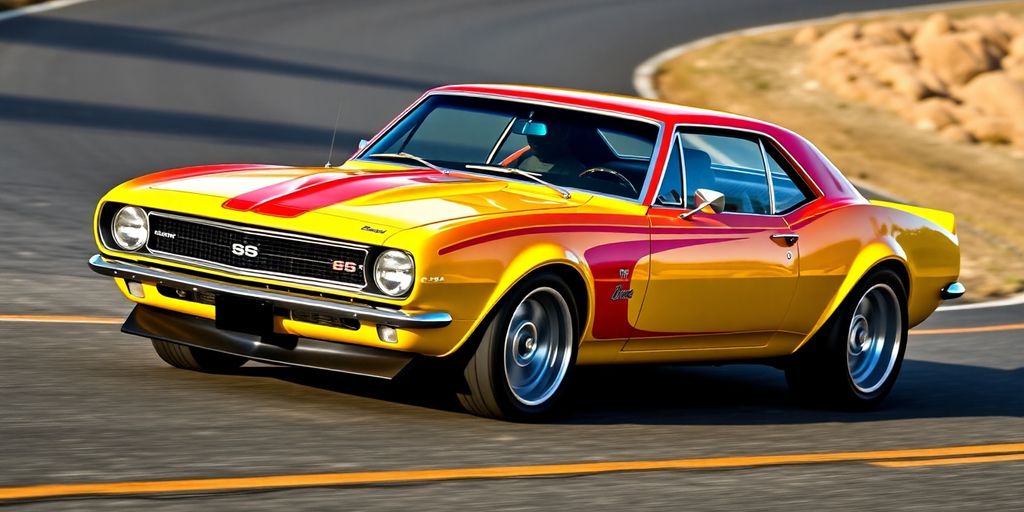
What is Pro Touring?
Ever heard of “Pro Touring”? It’s a cool trend where classic cars, like the 1967 Camaro, get a modern twist. Imagine taking that old-school muscle car style and mixing it with today’s technology. Pro Touring is all about transforming these vintage rides into high-performance machines. You get the best of both worlds: the look and feel of a classic with the power and handling of a modern car. It’s like giving your grandpa’s car a supercharged makeover.
Modern Modifications
When you’re building a Pro Touring Camaro, you’re diving into some serious upgrades. Here’s what usually happens:
- Engine Swap: Out goes the old engine, and in comes something like a Chevy LS-series V8. These engines are lighter and pack a real punch.
- Suspension Overhaul: The old leaf springs? Gone. Instead, you get coilovers and independent rear setups for better handling.
- Brake Upgrade: Drum brakes are swapped for high-performance disc brakes. You need stopping power to match that new speed!
- Wheels and Tires: Bigger wheels and wider tires not only look cool but also improve grip and stance.
Performance Upgrades
Performance is king in Pro Touring. Think of it as a muscle car on steroids. Builders focus on:
- Handling: Modern suspension systems make these cars corner like they’re on rails.
- Braking: With advanced brake kits, stopping becomes as thrilling as going fast.
- Reliability: These cars aren’t just for show; they’re built to drive hard and fast, reliably.
The 1967 Camaro in the Pro Touring world is like a rock star making a comeback tour. It keeps its classic swagger but now with the moves to back it up on any track or street.
Comparisons with the Ford Mustang
Market Rivalry
Back in the late ’60s, the Camaro and Mustang were like the Coke and Pepsi of the car world. Ford had a head start, launching the Mustang in 1964, and it took off like wildfire. By the time Chevy rolled out the Camaro in 1967, the Mustang had already secured a solid fan base. But Chevy wasn’t just going to sit back and watch. They aimed to grab a slice of that pie with a car that was not only stylish but also packed a punch under the hood. While the Mustang initially outsold the Camaro, Chevy’s focus on performance and style meant they were playing the long game.
Design and Performance Differences
When you look at these two cars side by side, the differences are clear. The Mustang had a more conservative design, appealing to a broader audience, while the Camaro went for a sportier, more aggressive look. Under the hood, the Mustang offered a range of options, from the economical inline-six to the powerful V8s. The Camaro, however, leaned heavily into performance, often coming standard with more powerful engines. Handling-wise, both cars had their strengths, but the Camaro was often praised for its superior cornering abilities.
Consumer Preferences
Choosing between a Mustang and a Camaro back in the day often came down to personal preference. Some folks loved the Mustang’s classic lines and affordable price tag, making it accessible to a wide range of buyers. Others were drawn to the Camaro’s performance-oriented approach and its sleek, aggressive styling. Lists of options for customization were long for both cars, but Chevy’s offering tended to cater more to the performance-minded driver. Enthusiasts from both camps often engaged in heated debates over which car was superior, a rivalry that continues to this day.
The 1967 Camaro in Popular Media
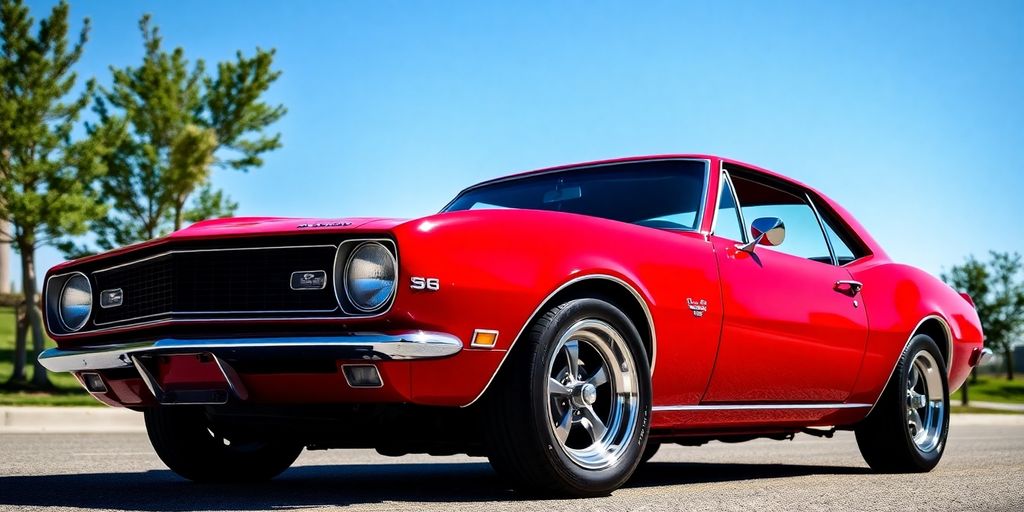
Appearances in Film and Television
The 1967 Camaro has made its mark on the silver screen, becoming a staple in many films and TV shows. This iconic car often plays a role that highlights its classic design and muscle car appeal. From action-packed car chases to nostalgic period pieces, the Camaro’s distinctive look and sound make it a favorite among filmmakers. Some notable appearances include the movie “Better Off Dead,” where it was driven by the main character, and in “Aloha Bobby and Rose,” where its sleek lines added to the film’s visual appeal. Its presence in these films not only showcased its performance but also cemented its status as a cultural icon.
Role in Automotive Shows
The 1967 Camaro is a frequent star at automotive shows, drawing crowds with its timeless design and historical significance. Car enthusiasts and collectors often showcase meticulously restored models, highlighting the craftsmanship and attention to detail that goes into preserving these classic cars. At events like the SEMA Show and various Concours d’Elegance, the Camaro stands out, not just for its beauty but for its engineering prowess. These shows offer a platform for owners to share their restoration stories and for fans to appreciate the car’s legacy.
Cultural References
The Camaro’s influence extends beyond the screen and car shows, embedding itself in various cultural references. It’s often mentioned in songs, literature, and even video games, symbolizing freedom, power, and rebellion. The car’s image is synonymous with the American muscle car era, representing a time of innovation and style. This cultural impact is seen in how the Camaro is often used to evoke a sense of nostalgia and admiration for the past, making it a beloved icon in American culture.
Restoration and Preservation of the 1967 Camaro
Restoration Challenges
Restoring a 1967 Chevrolet Camaro can be a real labor of love. Each car tells its own story, often hidden under layers of paint and rust. One of the biggest challenges is dealing with rust, which can be extensive depending on how the car was stored over the years. Body panels might need replacing or serious patchwork. Then there’s the issue of outdated parts—finding the right components can be like searching for a needle in a haystack.
Finding Original Parts
When it comes to finding original parts for a 1967 Camaro, patience is key. Many enthusiasts scour online marketplaces, attend swap meets, or connect with fellow collectors to source rare components. Here’s a quick guide to help you in your search:
- Online Auctions and Marketplaces: Websites like eBay and specialized forums can be goldmines for hard-to-find parts.
- Car Shows and Swap Meets: These events are perfect for networking with other enthusiasts and finding rare items.
- Specialty Suppliers: Some companies specialize in manufacturing reproduction parts that match the originals.
Preservation Techniques
Preserving a classic like the 1967 Camaro involves more than just keeping it running. It’s about maintaining its historical integrity while ensuring it remains a joy to drive. Regular maintenance is crucial—oil changes, brake checks, and keeping the engine in top shape. Storing the car properly, away from harsh elements, will prevent deterioration. Covering the car when not in use can protect it from dust and scratches. For those who want to keep their Camaro in pristine condition, investing in climate-controlled storage can be a wise decision. This not only keeps rust at bay but also preserves the car’s interior and exterior finishes.
Conclusion
So, there you have it, the 1967 Chevrolet Camaro—a car that roared onto the scene and left a mark that’s still felt today. It wasn’t just about speed or looks; it was a whole vibe. This car kicked off a legacy that’s been passed down through generations of car lovers. From its sleek design to its powerful engines, the Camaro set a standard that others could only hope to match. Even now, whether you’re a collector or just someone who appreciates a good ride, the ’67 Camaro holds a special place in the heart of automotive history. It’s not just a car; it’s a legend that keeps on inspiring.
Frequently Asked Questions
What makes the 1967 Chevrolet Camaro special?
The 1967 Chevrolet Camaro is special because it marked Chevrolet’s entry into the muscle car market, directly competing with the Ford Mustang. Its unique design, powerful engine options, and role in racing history make it an iconic vehicle.
How many engine options were available for the 1967 Camaro?
The 1967 Camaro offered a variety of engine options, including an inline-six and several V8 engines, allowing buyers to choose based on their performance needs.
What are the RS, SS, and Z/28 packages?
The RS (Rally Sport) package focused on style with features like hidden headlights. The SS (Super Sport) package enhanced performance with a more powerful engine. The Z/28 package was designed for racing, featuring a high-performance engine and suspension upgrades.
Why is the 1967 Camaro popular among collectors?
Collectors love the 1967 Camaro for its classic design, historical significance, and racing pedigree. Rare models like the Z/28 and SS are especially sought after.
How did the 1967 Camaro perform in racing?
The 1967 Camaro, especially the Z/28 model, was successful in racing, particularly in the Trans-Am series, where it competed against other muscle cars like the Ford Mustang.
What is the Pro Touring movement?
The Pro Touring movement involves modifying classic cars like the 1967 Camaro to perform like modern sports cars, often with updated suspensions, brakes, and engines.
How does the 1967 Camaro compare to the Ford Mustang?
The 1967 Camaro was Chevrolet’s answer to the Ford Mustang, offering similar performance and style but with its own unique features and options.
Can you still find parts for restoring a 1967 Camaro?
Yes, parts for restoring a 1967 Camaro are still available, though finding original parts can be challenging. Many enthusiasts rely on reproduction parts to complete their restorations.



